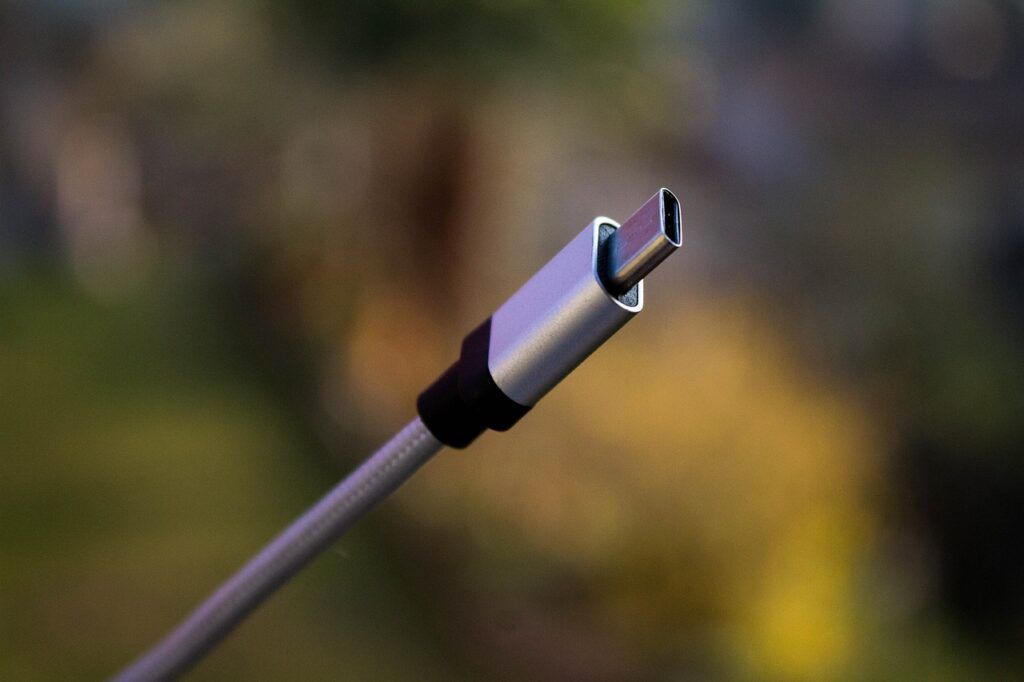Starting December 28, 2024, the Directive (EU) 2022/2380 will require a USB-C charging interface for a range of electronic devices sold in the European Union. This regulation is part of a broader push to simplify charging for consumers while reducing electronic waste across the EU. But how will this impact manufacturers, and what do they need to do to stay compliant?
This comprehensive guide will explain the directive, how manufacturers can prepare, and how IoT Consulting Partners can help your business meet these new requirements.
What’s Driving This Mandate?
the growing mountain of electronic waste generated by discarded chargers. The introduction of a universal charger means consumers can now use a single charger across multiple devices, significantly reducing unnecessary purchases and preventing obsolete chargers from filling landfills.
Key features include:
- USB-C as the Standard Port: By mandating USB-C for mobile phones, tablets, and cameras, the EU simplifies the consumer experience and sets a new industry standard.
- Unbundling Chargers: Devices will no longer come with chargers, meaning consumers only buy what they need, reducing production and waste.
- Harmonized Fast Charging: Devices will charge at the same speed regardless of the charger used, as long as it meets EU standards.
Challenges for Manufacturers: What You Need to Know
While this shift provides a greener, more efficient future for consumers, manufacturers will need to adapt quickly to stay compliant. With potential penalties for non-compliance and a short transition period, businesses must prioritize their response to this directive.
- USB-C Integration: All affected products must include a USB-C charging port by December 2024. This requires assessing current product lines and ensuring future designs meet the standard.
- Fast Charging Technology: For devices requiring higher power outputs, fast-charging standards like USB Power Delivery must be implemented. This ensures your products charge as quickly as competitors’ devices without brand-specific limitations.
- Labeling Requirements: Products will need clear, accurate labeling of charging capabilities, making it easier for consumers to identify compatible chargers.
Why This Matters: A Greener and Simpler Future for Consumers
The directive is a win for both the environment and the consumer. The EU estimates the reduction of nearly 1,000 tonnes of e-waste annually as fewer chargers are discarded. Additionally, consumers will no longer need to buy a new charger with each device, potentially saving up to €250 million each year.
This regulation is expected to drive innovation in charging technologies, further improving charging speeds and efficiency while reducing environmental harm. For manufacturers, these changes will present new market opportunities in sustainable tech.
How IoT Consulting Partners Can Support Your Compliance Journey
Adapting to the new EU standards doesn’t have to be daunting. At IoT Consulting Partners, we specialize in helping businesses comply with international regulatory standards and offer a range of services to ensure you’re prepared for the USB-C transition.
Regulatory Expertise
Our team provides clear guidance on the Directive (EU) 2022/2380, breaking down the specific requirements for your product category. Whether you’re a manufacturer of mobile devices or handheld cameras, we’ll ensure you understand the steps needed to meet compliance.
Compliance Management
We work with your team to develop a timeline that fits your production schedule, ensuring you meet the 2024 deadline without disruption to your business operations. From documentation to product testing, we handle every aspect of the compliance process.
Consumer Labeling Assistance
With new labeling requirements, we ensure your products meet EU standards. We help you implement the necessary product information on packaging and user manuals to avoid compliance risks while maintaining consumer clarity.
Ongoing Support
Regulations continue to evolve, and we stay ahead of the curve. We monitor future regulatory shifts, such as the anticipated inclusion of wireless charging technologies, and keep your business informed and ready to adapt.
Looking Ahead: Wireless Charging and Potential Future Mandates
While the focus of this directive is on wired charging through USB-C, the European Commission is already exploring the potential for future wireless charging standards. Currently, wireless charging technologies show a high level of interoperability, but the EU is working on assessing and harmonizing this technology in the future.
By keeping wireless charging technologies on the radar, the EU aims to avoid future market fragmentation while encouraging innovation. Businesses that prepare for these future trends now will be better positioned to stay competitive in a rapidly evolving market.
Actionable Steps to Ensure Compliance by 2024
To ensure your products meet the EU’s strict compliance deadlines, it’s essential to take immediate action. Here’s what your business should be doing right now:
- Audit Your Product Line: Evaluate which products will need to integrate USB-C charging ports and update your production timelines accordingly.
- Implement Fast Charging: Ensure all devices that require higher power levels are compatible with fast-charging technology, particularly USB Power Delivery.
- Review Packaging and Labeling: Update your product packaging to clearly communicate charging requirements to consumers, making sure you adhere to the EU’s labeling standards.
- Plan for Testing and Certification: Schedule product testing and certification with enough lead time to meet the compliance deadline without business disruption.
Get Ahead of the Curve with IoT Consulting Partners
Compliance with the Directive (EU) 2022/2380 is a complex but necessary step for businesses looking to maintain access to the EU market. Don’t risk penalties, market restrictions, or damage to your brand. IoT Consulting Partners can guide you through every step of the process, ensuring that your product are fully compliant and ready for the future.
Reach out to us today to discuss your compliance needs and let us help you seamlessly transition to the new regulatory landscape.


